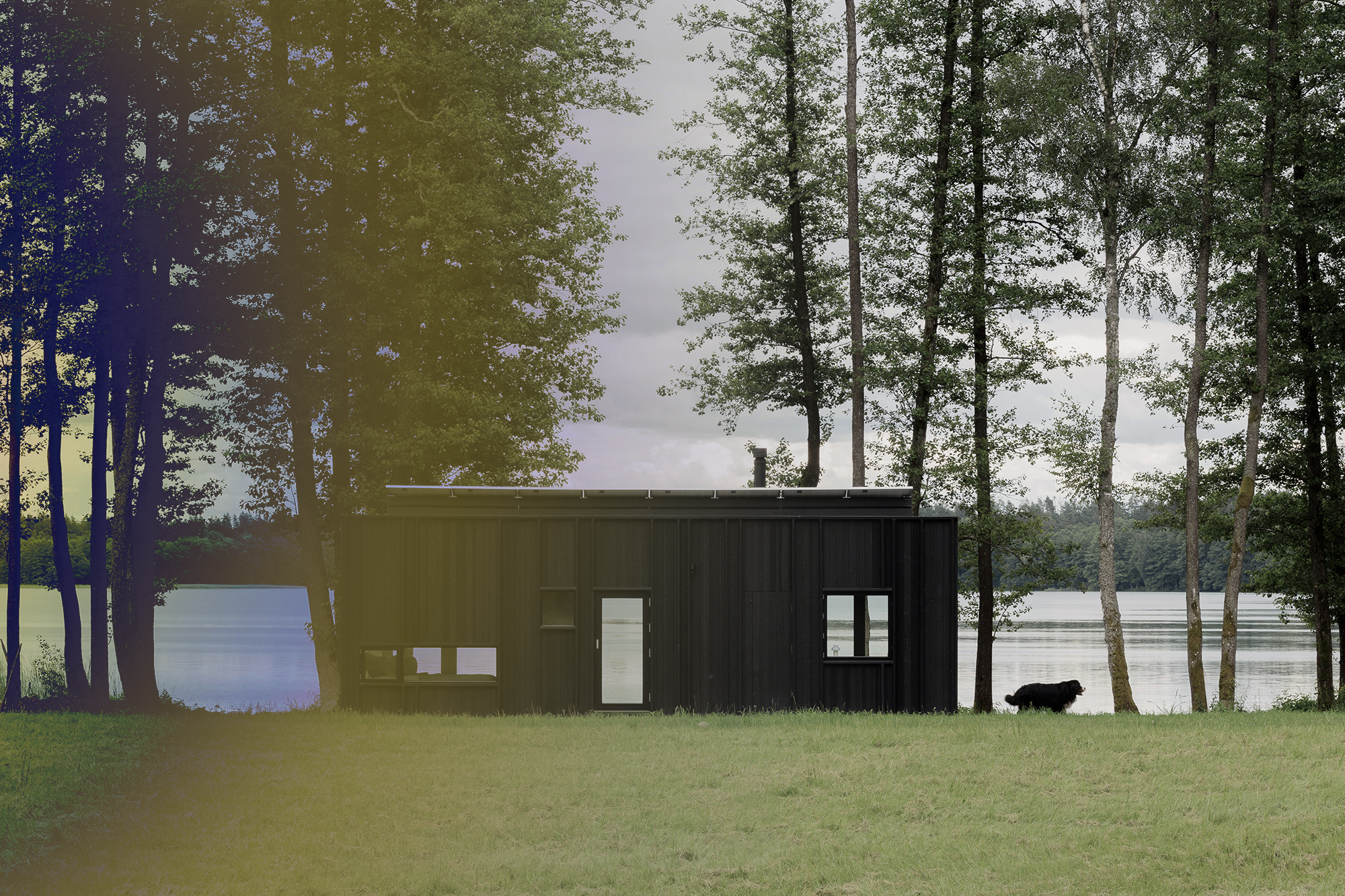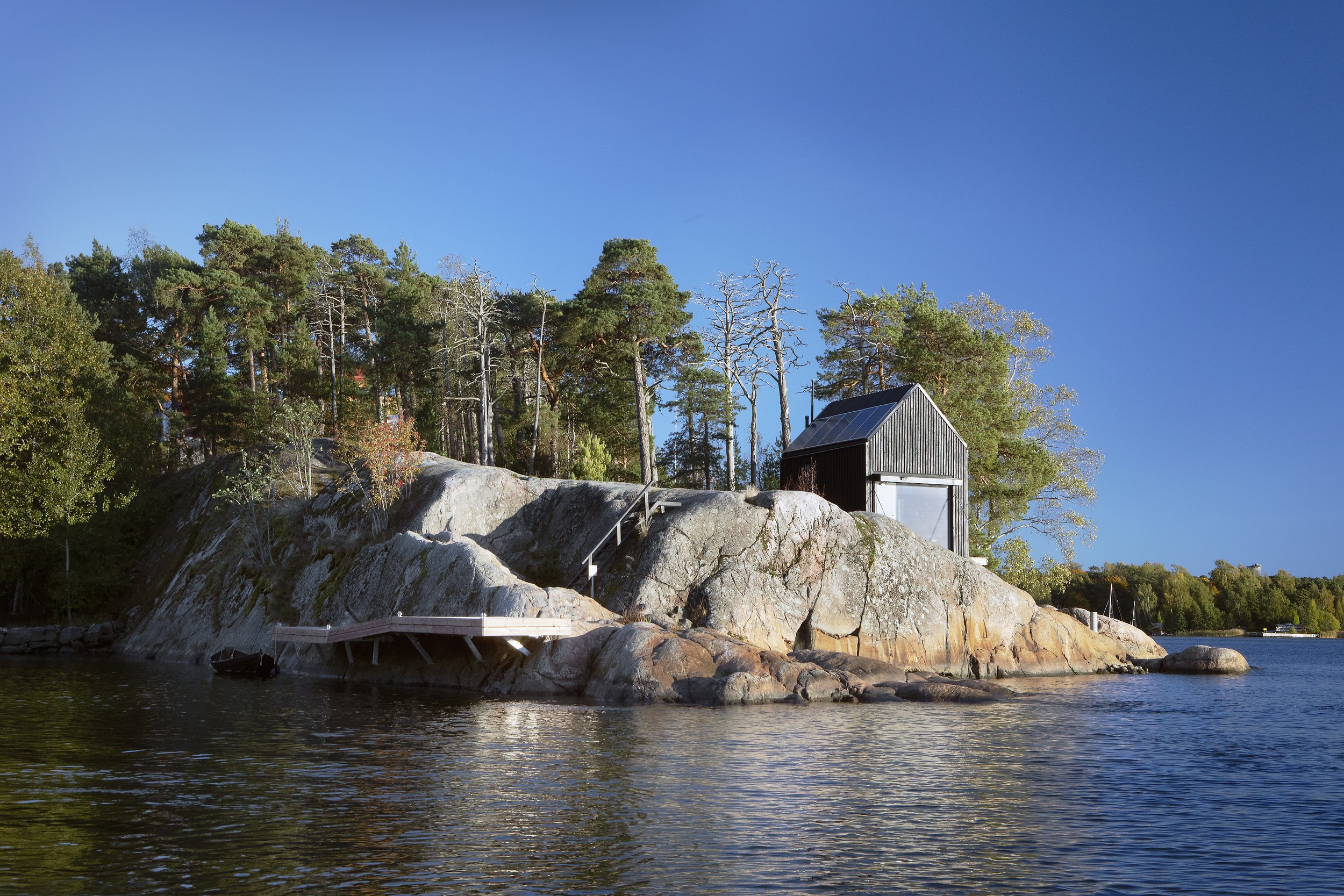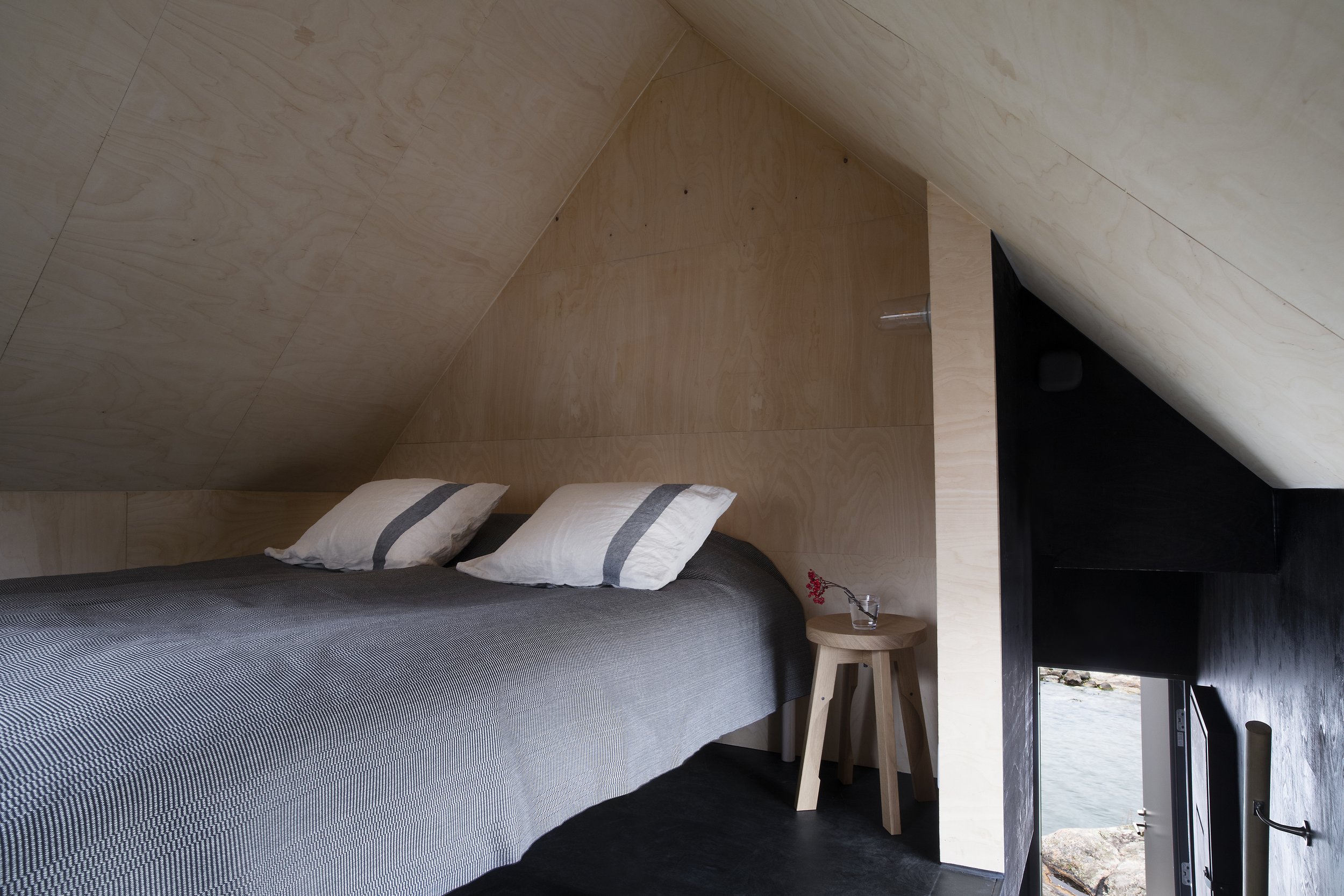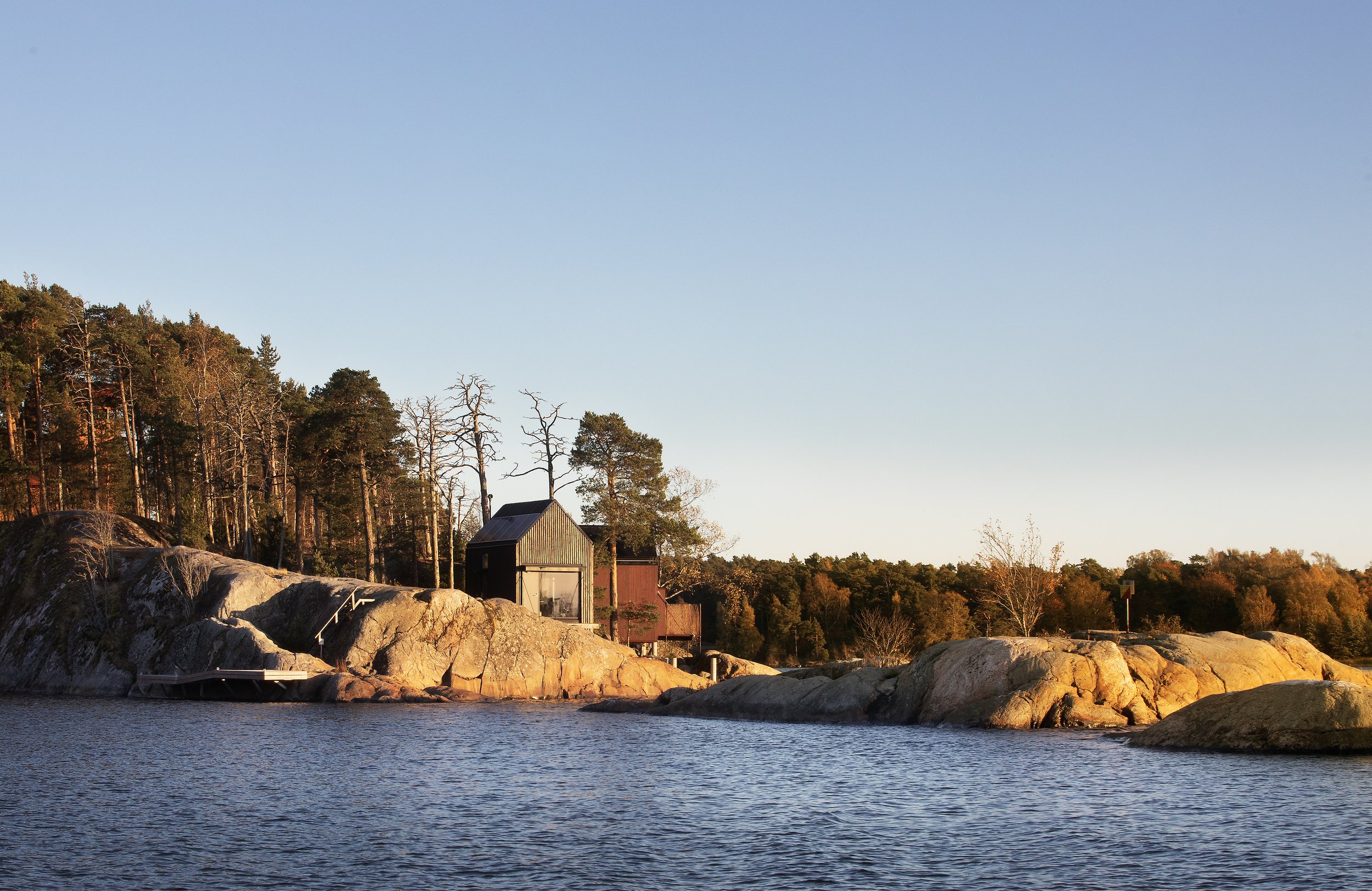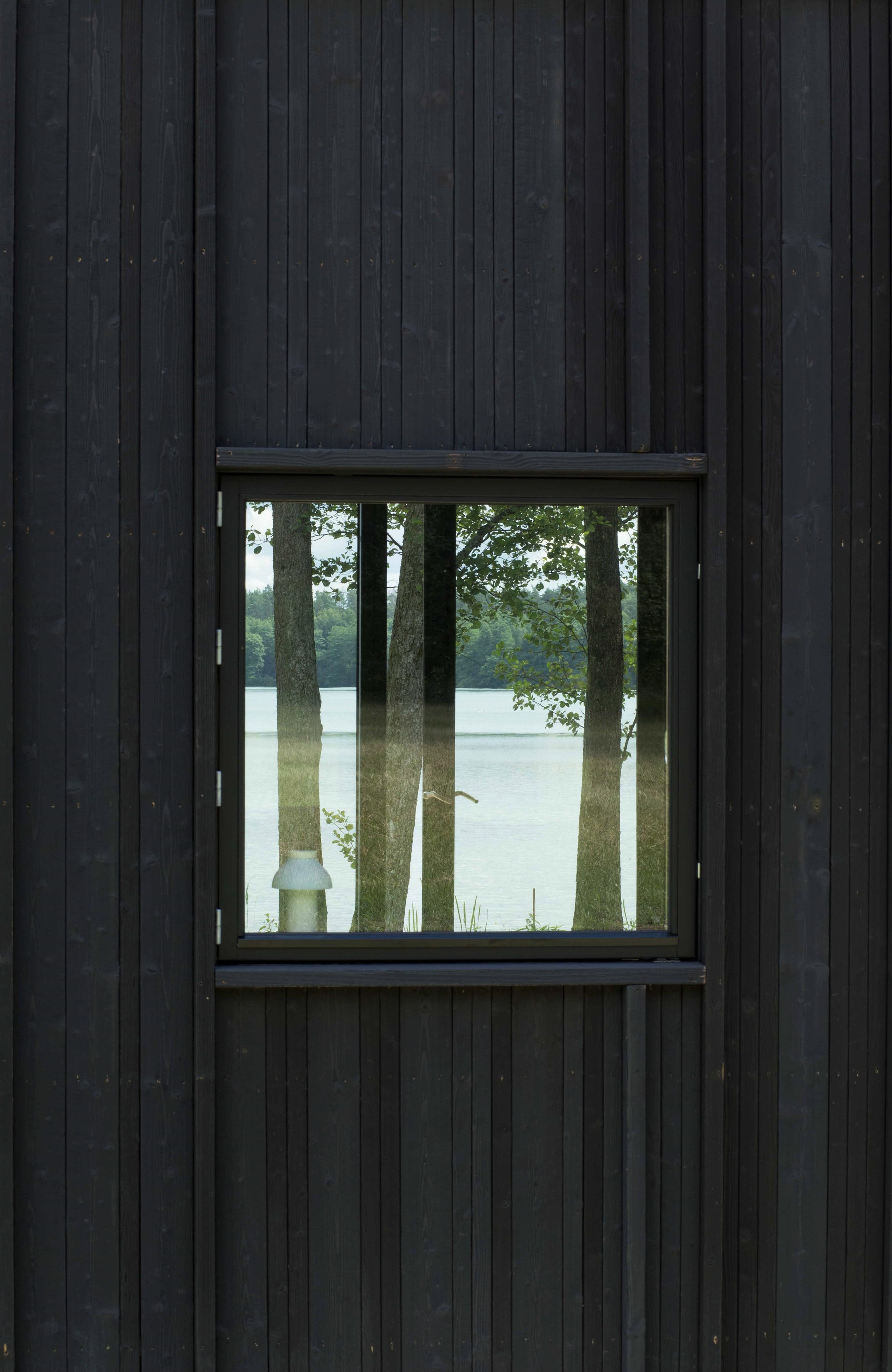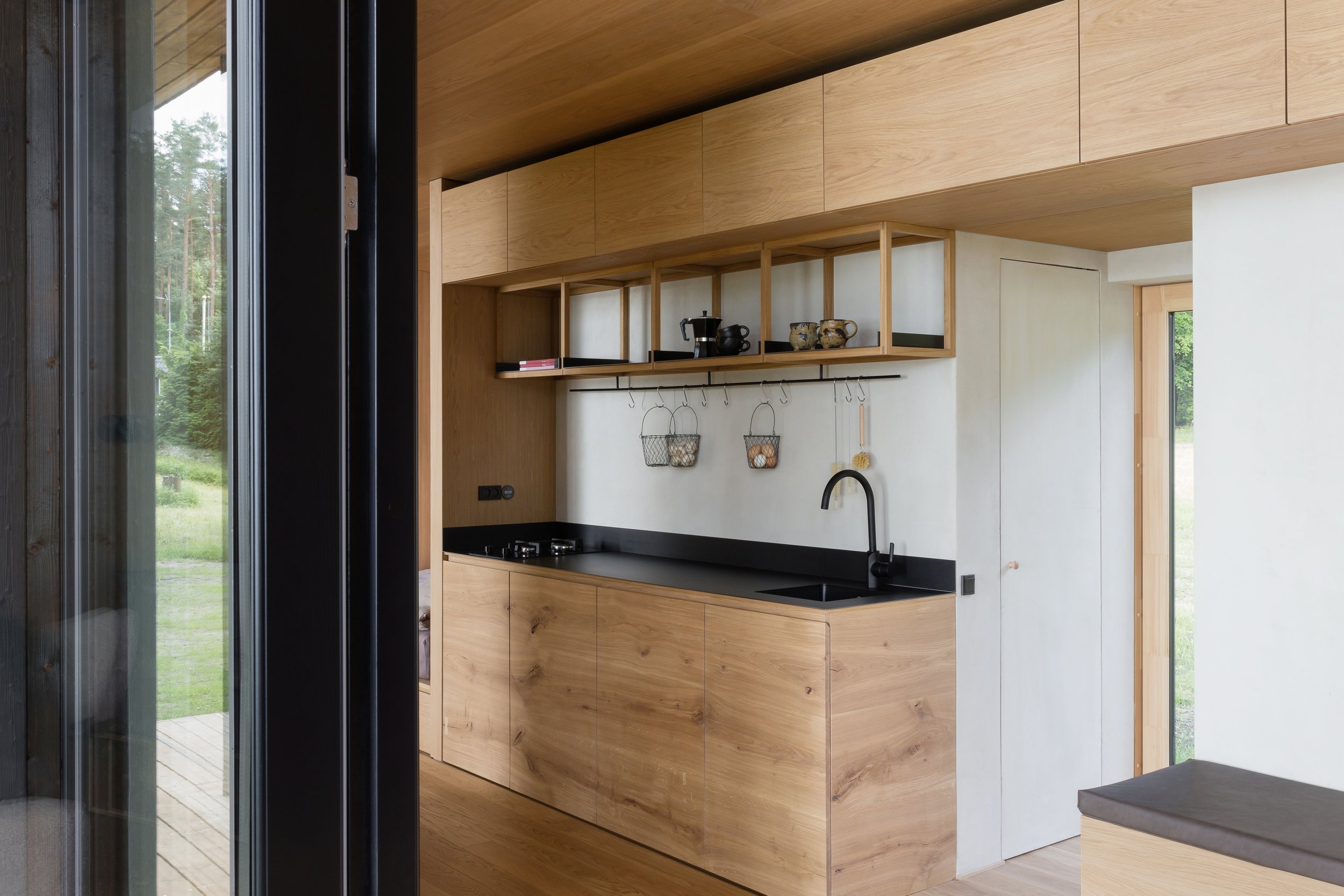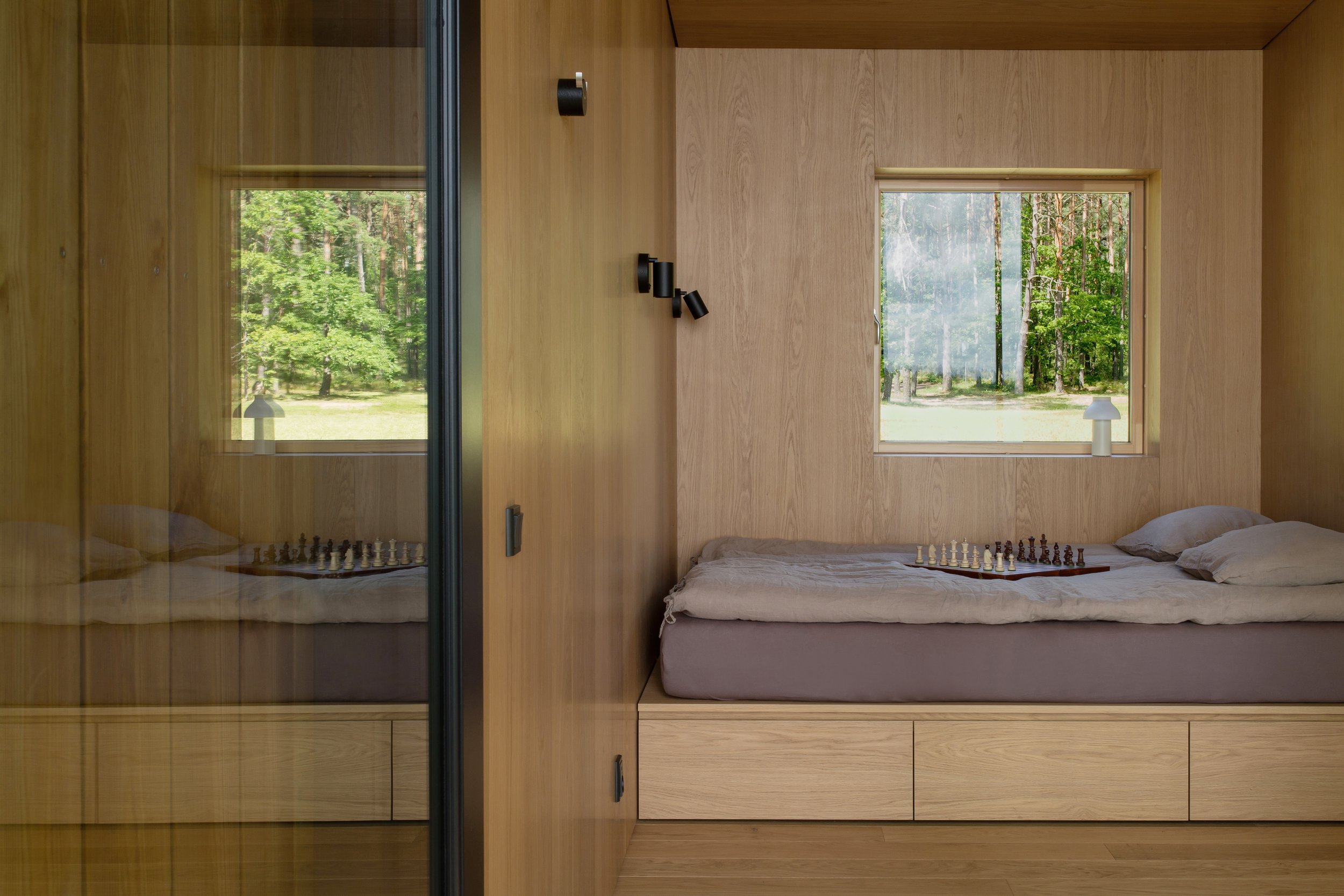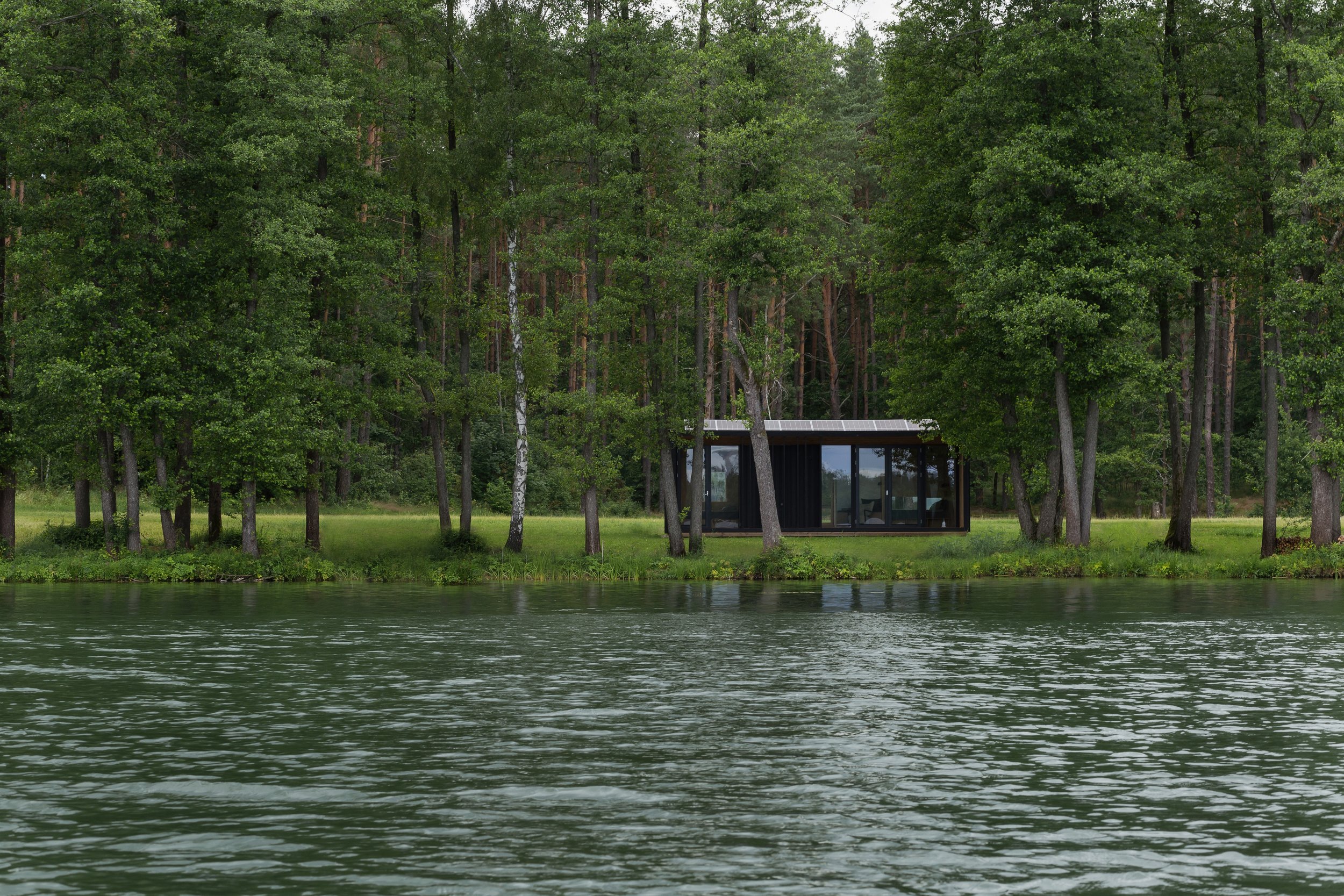A New Style Of Off-Grid Life
With three timber cabin designers in Finland, Lithuania and Portugal
Words by Harriet Thorpe
Sustainable living can often feel out of our control; tricky to align with modern life, and, in the midst of a climate emergency, prompting an uncomfortable sense of guilt. As a solution, off-grid living has been much discussed over the years, though many associate it with remote locations and making sacrifices to the way we live now.
Imagine if you could be totally accountable for all the energy and water you use, and it was all renewable, while living in a beautifully designed space that feels not so far from your current reality... There’s a growing group of architects and designers who are showing people what a modern off-grid life can look like, without compromising on style, comfort or versatility.
It’s an evolution driven by innovative off-grid technology – from solar and wind energy; to water systems that collect, filter and recycle rainwater; and various toilet options from compost to incineration – which is getting more compact and efficient each year. Bolstered by a growing social interest in experiencing and adopting more sustainable lifestyles, being accountable for resources used and actually understanding the meaning of energy and water to our survival.
Here, we explore three new concepts for cabin living that subverts the stereotypes of off-grid as remote, unachievable or only for those ready to give up daily comforts. These cabins are autonomous off-grid blueprints for today’s world, featuring beautiful timber designs that truly prioritise craft, sustainability and modern living.
Majamaja, Finland – Attracting urban design aesthetes off-grid to experience how it feels to be accountable for daily resources
Images by Chikako Harada
Let’s head first to Helsinki, where Tuomas Autio and Pekka Littow, co-founders of Majamaja, are tempting urbanite design aesthetes to their off-grid cabins. Think minimalist designs, architecturally framed views and curated local experiences; even though you’re just a 15-minute boat-ride (or short journey by bike or public transport) from the city centre, you’ll feel significantly secluded on a rocky island.
The cabins (there is a little village of four and an upcoming sauna) are beautiful in terms of aesthetics and designed with discipline to achieve the lightest possible environmental footprint. Made of local spruce and birch plywood, the prefabricated buildings have cleverly folding kitchens, neat wet rooms, and a cosy bedroom up a small staircase all inspired by nautical living. Bespoke off-grid technology borrows from military-style solutions, using solar energy and a unique water system that enables 98% to 99% of 100 litres of water to be recycled and reused – showing huge potential for placing the cabins in remote locations where water is less abundant.
The pair of architects were inspired to start Majamaja after bonding over their own experiences of off-grid living without running water or electricity. Autio’s childhood holidays were spent in an ‘old-school’ Scandinavian summer house with no electricity and drinking water from a well; while Littow’s experience was living on a boat with limited resources.
“Off-grid living makes the limits of your natural resources very concrete,” says Autio. “You understand where your energy and water come from. You live by the principle of optimising your resources, which is a very healthy and eye-opening educational experience. There is so much talk about different forms of sustainable living and understanding the limited resources of our planet – off-grid makes these limits very visible at a daily living level.”
Madeiguincho, Portugal – Crafted and personal off-grid homes for more permanent living
Images by João Carranca
While Majamaja operates from May to September due to the cold Finnish winter climate, further south in Portugal, opportunities for off-grid living all year around are much more feasible. Cascais-based designer Gonçalo Marrote is director of Madeiguincho, wood-working specialists and creators of beautifully crafted off-grid ‘tiny houses’ on trailers. His last tiny house was designed for a British couple in their 70s who relocated to the Algarve and he has been receiving increasing numbers of enquiries from retirees seeking to downsize and enjoy simpler life more connected to nature.
Another interesting market for Marrote in Portugal is people building houses in remote locations, who commission off-grid homes so they can live comfortably on site while construction stretches out, with the plan to rent out the tiny house as an Airbnb in the future.
The Madeiguincho tiny houses are designed as meaningful homes – highly personalised, site specific to their location, with an uplifting and domestic warmth, all while incorporating off-grid requirements from solar and wind technology for energy, to rain-water processing capabilities and compost toilets. Marrote comes from a family of carpenters and masons, so takes pride in using high quality, locally and sustainably sourced materials; Japanese cedar from the Azores for the structure, Portuguese pine for the flooring and plywood, and cross laminated timber (CLT) from Northern Europe for the walls.
“For me, it’s ‘off grid, on life’. The more connected you are to your wellbeing, the more you are sustainable; it’s a kind of loop,” Marrote shares. He started designing tiny houses in response to his own pursuit for a more conscious, happier way of life, and frequently visits his own off-grid home with his wife and three small children. “What I love the most, is to see their brains enter into a different dimension and frequency. It’s a way of being that is much more real. It’s a disconnection and a therapy.”
Konga, Lithuania – Luxury off-grid cabins designed for maximum comfort
Images from Konga
Another specialist in wood-working craft is Paulius Žemaitis, co-director of Konga based in Lithuania. His high-end timber kitchen and hospitality interiors manufacturing company founded on the philosophy of sustainability was thriving – yet the custom designs were resulting in a lot of timber offcuts. He saw an opportunity to use the ‘waste’ material to create luxury, sustainable cabins, designed by his long-time collaborator Danish architect Mette Fredskild. “Now we don’t waste any new resources, we design them into the cabins. Sustainability is a big draw for our clients, especially in Denmark and Norway,” says Žemaitis.
Again, as well as being sustainable, these cabins are covetable pieces of craft, fully furnished with wooden oak veneer panels and burnt wood exteriors. The kitchens feature Konga’s ‘zero-waste’ shelving system made fully from leftover wood. With a refined customer in mind, there is wardrobe space and sliding doors for privacy, customisable storage and veranda options, plus a chic dark-stained wood iteration. The Konga off-grid uses solar energy, has a wood stove with a water heating system, rainwater collection and an incinerator toilet, yet they are also available ‘on-grid’.
In fact, when it comes to cabin-living and comfort, there are a few things Žemaitis has learnt along the way. “The amount of comfort you can achieve off-grid is dependent on how much money you have to spend on technology. But if you have the option to connect to the grid, you’ll have much more comfort. More people in the US are interested in the off-grid option because of the vast amounts of land disconnected from electricity. Europe is more dense, so you can have electricity almost anywhere; and electricity can solve 70% of problems from heat to sewage, as seen on some of the most advanced houseboats.”
Can off-grid capture the urban imagination?
It’s all food for thought, but all three cabin creatives agree that the off-grid cabin business is certainly growing and interest is on the rise. Each has their own thoughts on the direction and potential of the sector.
“I think off-grid living is only going to become more accessible, especially as larger companies start to meet the demand; yet at the same time laws and legislation might begin to be more restrictive. Though in terms of technology, instead of energy, the key issue will probably be water and we will see a growth in development of technology around humidity collection,” says Marrote.
Autio meanwhile sees potential for the urban environment, where prefabricated off-grid cabins could in-fill ‘loopholes in the urban fabric’ if bureaucratic and technical limits prevent housing being built: “Floating houses show how boat-living can be transformed into a more permanent living experience. I would be interested to see how off-grid could be integrated into the urban fabric to meet changing living needs and connecting to existing centralised networks.” As our global population continues to grow, off-grid it seems might be the next disruptor to urban planning and land use as we know it.

